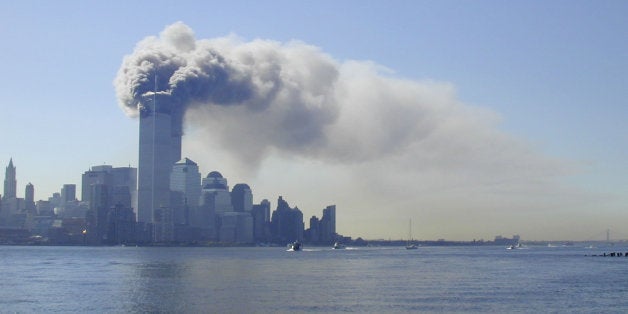
In the months after the 9/11 attacks, most Americans felt that the threats we faced from terrorists were limitless. Anything seemed possible if al-Qaeda militants could enter our country, learn to fly airplanes, and then crash commercial flights into the World Trade Center and Pentagon. Fifteen years later, the efforts of federal and local government have dramatically reduced the possibilities of foreign terrorist attacks in the United States. Yet, as we grapple with the growth of homegrown extremism, the more prevalent threat today, we still have not tapped into our greatest resource - the American people.
Since 2001, federal and local government have largely addressed vulnerabilities in our visa process, transportation security, and intelligence sharing. Unlike Europe, we don't contend with open borders and the near proximity of failing states. Despite campaign rhetoric and the images emanating from the Middle East, waves of foreigners are not infiltrating our borders and committing terrorist attacks.
Instead, the central threat that Americans in the United States face is from our own disaffected young people who have become susceptible to radicalization. In the last 15 years, 364 "jihadists" were indicted or convicted of a terrorist crime, or killed while committing an attack in the United States according to a New America Foundation study. Almost 80 percent of those jihadists were confirmed to be US citizens or permanent residents. And while 83 percent of Americans may feel that a terrorist attack with a high number of casualties is likely, this subset of jihadi extremism is responsible for 94 deaths inside the United States since 9/11.
As a point of reference, nearly 500,000 people died in traffic accidents in America from 2002 to 2014. Approximately 10,000 people were killed in gang related deaths from 2007 to 2012. In 2014, an average of 28 people died every day in America as a result of a drunk driving accident; more than 42,000 Americans committed suicide that same year. An estimated 41,000 Americans will die of breast cancer this year alone.
These comparisons are not meant to minimize the tragic loss of those 94 lives or the psychological impact of being terrorized by the idea of an attack. Rather, public health threats like drunk driving and cancer have served as a call to action for American civil society. Non-governmental organizations, community groups, and other concerned citizens have found ways to address these challenges through education, prevention, and civic action. We need to develop similar community responses - and enlist the passion and drive of the American people - to prevent violent extremism within our borders.
Consider examples of ways in which our civil society has developed successful tools to decrease these other causes of death and how Americans might apply these tools to prevent homegrown extremism:
Promoting safe practices or habits. Public service announcements showing crash test dummies flying through windshields changed Americans' seat belt habits. In 2010, 85 percent of Americans wore seat belts compared to 11 percent in 1981. Similarly, the campaign of "See something, say something" has led citizens to report suspicious activity and thwart attacks. Still, the slogan must extend beyond calling the police in the face of impending danger. It should also mean engaging community-level help, such as a faith leader, social worker, mentor and/or a peer when we see someone struggling with issues of anger, loss of dignity, and isolation.
Crafting a counter-narrative that influences public perceptions and individuals' behavior. Mothers Against Drunk Driving estimates that they have saved 330,000 lives since 1980. They created a counter-narrative to partying and driving home drunk, and their messaging helped empower young people by celebrating the idea of "designated drivers." Faith-based or youth-focused civil society groups are well placed to develop anti-extremism messages that both devalue the appeal of movements like ISIS and praise diversity, pluralism, and dialogue. Additionally, anti-bullying groups could include anti-extremism messaging as part of their campaigns and provide training in peer outreach in high schools and colleges.
There is an almost daily opportunity for Americans who have traveled to Muslim countries, who have Muslim friends or co-workers, or who are in fact, Muslim, to debunk the stereotype of Muslim=Terrorist. For example, all of our unofficial ambassadors who volunteer in the Muslim World publish essays and give presentations - on campuses, in public libraries, at local schools - for this reason. With just 38 percent of Americans thinking they know a Muslim, informed Americans have to speak out against hate speech and ignorance. The perpetuation of such stereotypes is slowly isolating young American Muslims and make some feel as if there is no place for them in America.
Designing, supporting, and participating in tailored prevention programming. Preventing gang violence is not an exact science, but the National Gang Center considers effective the "Comprehensive Gang Prevention, Intervention, and Suppression Model." The model's strategies include community mobilization and involvement of former gang members, civil society groups, and agencies; interventions that link gang members and their families to schools, faith-based organizations, other grassroots organizations, and law enforcement; and close supervision of gang members enrolled in the program by law enforcement agencies, community-based agencies, and schools.
The partnership components that are a part of this model - involving family, community, and law enforcement - and the focus on interventions at such a personal level are attractive given the individual-based nature of the homegrown extremism threat. Recently, Homeland Security offered the first grant opportunity "devoted exclusively to providing local communities with the resources to counter violent extremism" in the United States. That funding could apply these community partnership models within the homegrown extremism context.
Participating in awareness campaigns that lead to early intervention. The mortality rate for breast cancer declined by nearly 2 percent every year from 2003 to 2012. We can attribute these decreases to outreach efforts by groups like the Susan B. Komen Foundation that educate citizens about the health risks they face and places to seek consultation and treatment. Similar efforts by local organizations -- particularly Islamic-faith based organizations - could shed light on the early warning signs of radicalization and mental illness and enable families to proactively seek help for their children.
Volunteering as a resource to troubled individuals. In the days after Robin Williams' death, calls to the National Suicide Prevention Lifeline, a 24-hour network of 160 crises centers, increased from 3500 a day to more than 7400. When someone calls a suicide hotline, she or he is routed to a professional or trained volunteer who offers individual attention and information about health services in their area. This kind of care directed at a troubled, and perhaps lonely, person is applicable to preventing homegrown extremism. There are countless stories of isolated individuals growing radicalized through the bombardment of messages from a cohort of new online "friends" who offer promises of a life of dignity, purpose, and moral clarity. These recruiters fill a gap created by an absence of friends, peers, and community. Countless Americans receive training and volunteer with crises centers every year. Similar programs that build a community's resiliency and capacity to prevent radicalization can be replicated and supported with volunteers.
These examples do not comprise a magic formula. Rather they are evidence for how a community can develop its own resiliency and capacity to prevent health and safety problems; preventing homegrown extremism is no different. Many of the "push" factors that lead to radicalization overseas, such as corruption, human rights abuses, and poor governance, are largely absent in the American context. However the "pull" factors like a perverted religious ideology, offers to fulfill delusional aspirations for grandeur, and the manipulation of mainstream insults to the identity and dignity of Muslims seem to be increasingly prevalent, whether via online sources or simply coverage of the presidential election.
Fifteen years ago, it was difficult to imagine private American citizens playing a role in counterterrorism. Today, it is clear that we - along with effective law enforcement and intelligence sharing - must play an integral role in this effort. The challenges of homegrown terrorism will have to be met by community-level resiliency in schools, local government, civil society, and perhaps most importantly, families and peer groups. Americans have demonstrated their capacity for civic participation on a range of societal challenges, and we must now use these successes as a model for preventing the spread of extremism in our communities.
